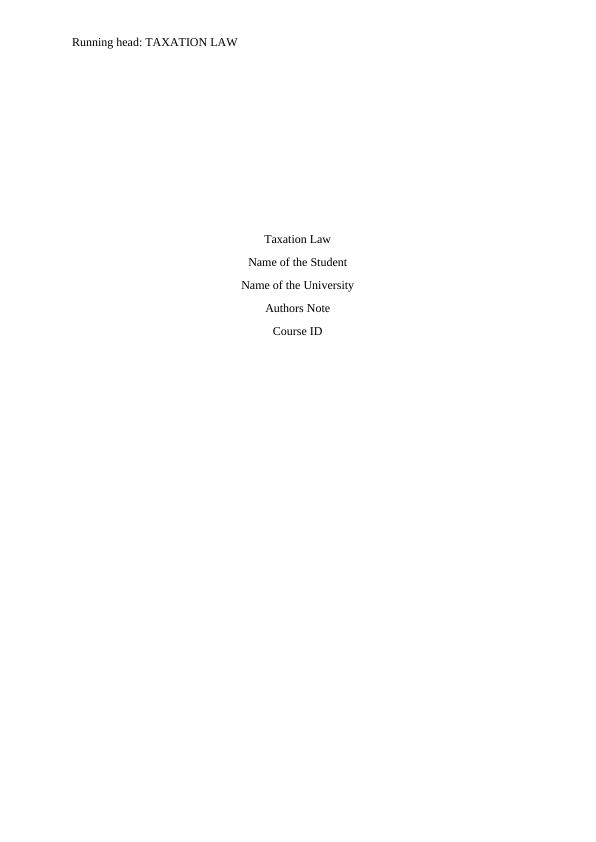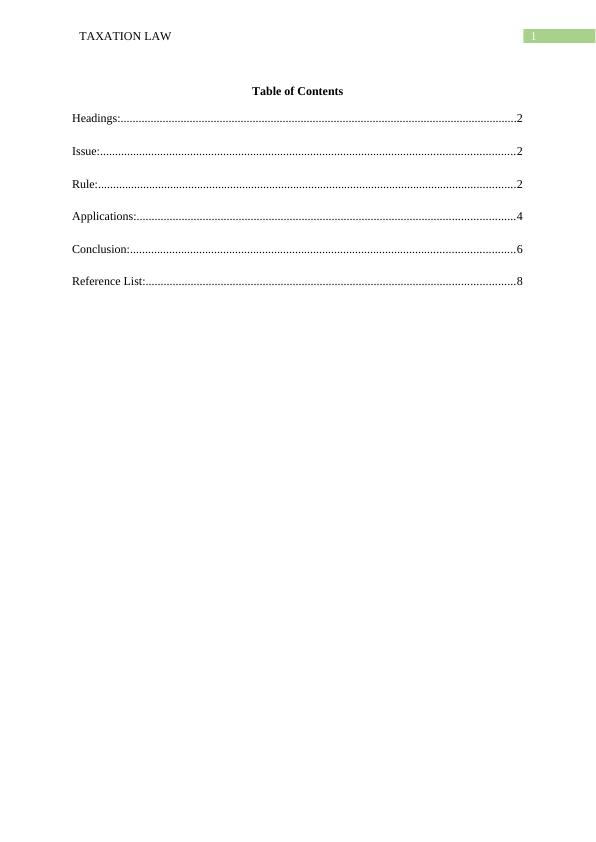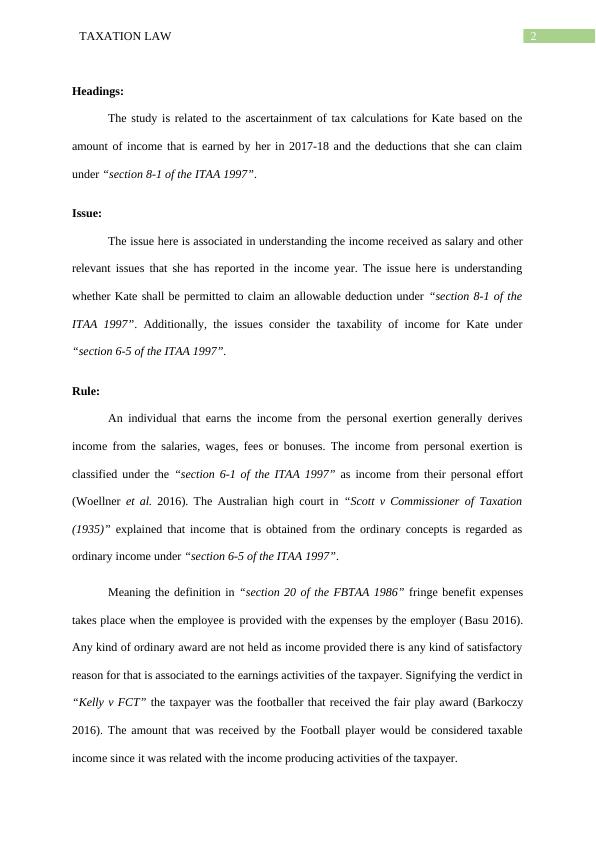Taxation Law: Understanding Tax Calculations and Deductions for Kate
Added on 2023-06-11
9 Pages1977 Words303 Views
End of preview
Want to access all the pages? Upload your documents or become a member.
Determining Taxable Income and Allowable Deductions under Taxation Law
|12
|2334
|127
Taxation Law Application - Assignment
|10
|1592
|107
Taxation Law Application - PDF
|11
|2169
|52
Taxation Law: Determination of Ordinary Income and Allowable Deductions
|15
|3543
|180
Taxation Law
|12
|2995
|36
Understanding Taxation Law: Key Concepts and Implications
|9
|1821
|73



